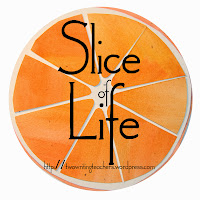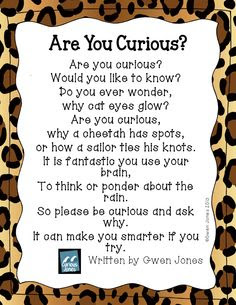They're Writing! - What Do I Do To Sustain The Output?
One of the great challenges we face as teachers of writing is learning to observe student writing with a view that encompasses instruction. The trick is to look closely at the writing of an individual to notice what that writer needs and at the same time consider other students who may also be faced with the same direct need in the development of their writing.
Patterns of need frequently emerge as you confer with your students. When this happens you may find that you need to develop a teaching focus for the whole class, or a small group. It will not surprise you to learn that this is the perpetual challenge of the Writer’s workshop.
Once your students are writing regularly and displaying some stamina for the task, you may find yourself asking the questions –
What happens now?
What should I do to most effectively move their writing forward?
What do I say to them when I join them for a writing conference?
It is easy to look at a student’s writing and immediately jump on the mechanical aspects and teach into that. The surface features of the writing are so obvious, but they remain just a part of the teaching whole that we need to respond to as we build a knowledge base around our student writers.
It is important for your initial response to any student’s writing to be directed towards what they have done well in the piece under consideration.
You may find many of your writers will develop writing pieces that contain multiple ideas within the one piece of writing. The writing may lack a clear focus. A pot-pouri of undeveloped beginnings.
To assist students you could consider one of the following strategies:
Share a published piece, or a student exemplar, where the writer has remained focused on the one topic, and ask students to consider how the writer remained focused. Encourage students to then rework their writing using the same strategies as seen in the mentor text. An alternative could be to write a new piece that is focused on the one topic or idea.
Share a piece of writing you have completed and talk through your thinking, highlighting how you kept yourself focused on the topic and developed your idea. Your process and strategies will prove invaluable to the inexperienced writer.
If one of your students needs help maintaining their writing focus, you could enlist the participation of the class, or a small group (author's circle) who could ask questions and offer suggestions. The assisted writer could make notes with your help and then use these ideas to further develop the writing piece. This strategy should only be used when the writer agrees to its use.
Helping Writers Find the Emotional Self
Some young writers will produce writing pieces that tell only the external story –what happened, what they saw. They omit the internal story – how they feel, or what they thought. You may show before and after samples of writing in which this inside/outside strategy is applied. You may choose to model this for them in a personal narrative of your own.
What’s Important Here?
Sometimes student writing does not demonstrate or recognize what’s important. All the events are given equal attention or emphasis. To assist your student writers to develop a sense of what’s important, choose a short text that your students are familiar with and have them identify the parts where the author clearly focuses upon importance of certain events and lightly touches upon less important matters.
Here are some other issues that may emerge at the beginning of the school year.
The Challenge of the Blank Page and the Blank Look
Promote the notion of the blank page as offering an invitation to write, where the page remains hungry for their words.
Remind students to use their lists/ topics as a writing ‘spark.’
Suggest they think about what is happening in their lives right now that is making them happy, sad, frustrated, worried etc
Remind them to think about others stories they have heard recently that might relate to their lives.
Encourage the rereading of earlier pieces to see if there is more that can be said. They may also look for ideas that connect to the earlier piece of writing.
‘I’m Finished” -Stamina/Endurance runs out after just a few lines
Encourage the student to talk about their writing. Help them to notice that they have more to note about the topic.
Have the writer talk to a writing partner who has endurance –someone who could help them to focus.
Remind them of the expectations of their writing community and encourage them to persist. Demonstrate your own persistence and willingness to return to the writing piece previously launched.
Same Topic, Different Day
Encourage the student to write about the topic in a different way (genre, style, point of view).
Encourage the student to discover different things to say about the topic.
Encourage the student to add more ideas to their topic lists.
Increase awareness of the range of ideas other writers in the class are exploring. Cross fertilize possibilities.
List- like Entries day after day
Talk to the student about what is really important about the ‘list of events’ and assist them to choose one to write about.
Have the student work with a partner and compare entries to delve into events with greater detail.
Share notebook entries that approximate the kind of writing you want to see from the writer.
Use sticky notes to assist the student to ‘tease’ out ideas, ask questions, important to include in the writing piece.
Students Use Their Notebooks Ineffectually or Inappropriately
Continue to show your emerging authors examples of appropriate use of writer's notebooks as a writing resource.
Reinforce the notion of the notebook as a place to collect, experiment, and explore writing ideas.
Inform them about what you hope to see in their notebooks.
Student Choose Topics to which they have little knowledge or connectedness
Engage the student in a conversation about the items on their topic/ideas lists in an effort to identify those ideas that might be more important, or to which they have a stronger connection or knowledge base.
Encourage the student to talk to other students about the kinds of things that are providing a ‘spark’ for their writing.
Alan j Wright
References:
The No Nonsense Guide To Teaching Writing Judy Davis and Sharon Hill, Heinemann, 2003
What a Writer Needs. Ralph Fletcher, Heinemann 1993
Mentor Texts -Teaching Writing Through Children’s Literature, K-6
Lynne Dorfman & Rose Capelli, Stenhouse, 2007
Writing For Pleasure- Theory, Research and Practice. Ross Young and Felicity Ferguson, Routledge 2021
Igniting Writing- When A Teacher Writes, Alan J Wright, Hawker Brownlow 2011






Comments
Post a Comment